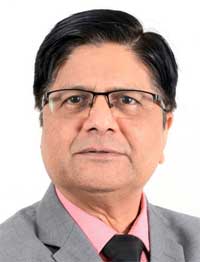|
REGULATIONS FOR MEDICAL
DEVICE
|

Mr. Amit Dave
M. Pharm, MBA
Former CEO – Brazil operations Zydus Cadila
Former Vice President Export - Zydus Wellness and
Claris Lifesciences Ltd. |
We are starting this
column on regulatory processes for medical devices
across the countries of the world in Medical
Plastics Data Services magazine. The focus will not
only be Regulations across the world but also on the
export market for the Medical Devices and suggestive
models for these markets.
Rapidly Changing Regulatory Scenario And Its Roll
For The Health Care Products
Key words : Regulations – Necessity – WHO –
Health policy – pace of changes – complexities just
starting
Necessity of
regulatory laws
Ensuring safety and
efficacy for the health related products is
important not only for the patients and medical
professionals but even for the Government and the
policy makers. Regulatory framework or Regulatory
laws serve this purpose, making them essential. In
the case of medical devices, actual users, namely
medical professionals (doctors as well as
paramedical staff) and patients do not know much
about the quality aspects of these products. That
role, therefore, falls on the authorities.
Regulatory laws have an important role in conforming
quality and safety of products being used. |

In 2014, a fairly acceptable definition
for the regulations was given. Regulations have been
defined as the combination of legal, administrative, and
technical measures that governments take to ensure the
safety, efficacy, and quality of medicines, as well as
the relevance and accuracy of product information.
As the definition clearly mentions
(accuracy of product information), regulations are
important even for the product usage information,
including labelling instructions. Simple parameters like
manufacturing date and shelf life as well as storage
conditions are supposed to be part of the product
regulations.
WHO expanded regulatory role
.The role of regulatory field was later
expanded by WHO where, in its handbook, WHO specified
that even for the policymakers, regulations are
important. Regulations represent a key means by which a
government gives effect to its health policy
preferences, especially through the exercise of a
government’s law-making powers.
Changes and the challenge
It would be right to consider
pharmaceuticals as the benchmark for this complex and
ever-changing regulatory framework. Complex regulatory
scenario for pharmaceuticals came into existence in the
early 90’s. Regulatory complexities, thus, are not many
years old. Before this period, regulations for medicines
were very superficial and “mild”. Today, they represent
a very complex process involving a huge set of data
requirement, large cost impact and a very long time for
approvals (even up to three years). All these changes in
medicines have happened mostly in the last twenty years.
Country-specific requirements also have a wide variation
now, making the process more complex. Medical devices
are at the initial phase of this process. Definitely, a
very complex story is going to unfold in next few years.
Those who prepare for this complex future today would be
the front runners, and those who miss the bus may suffer
as laggards. We, readers of Medical Plastics Data
Services, always believe in seeing the future coming and
preparing for that future today, and thereby stay ahead
of others.
Regulatory complexities for Medical
Devices in the countries of the world run across a
continuum with two extremes. There are many countries
today which have practically no regulations for the
devices, and allow free import. In some countries, on
the other side, a very complex process Including even
the manufacturing plant documentation is needed. |
